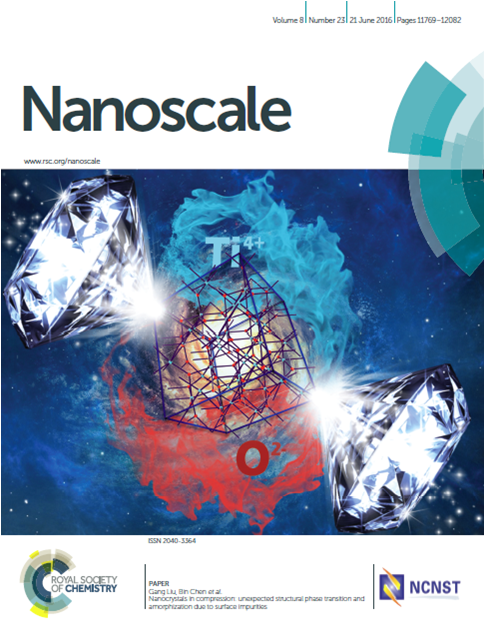Surface doping driven anomaly in the compression behaviors – Dr. Gang Liu
JANUARY 20, 2016
Phase transitions in surface-modified TiO2 nanocrystals—An unprecedented surface doping-driven anomaly in the compression behaviors of nanocrystals has been discovered by a HPSTAR research group Led by Dr. Gang Liu. This work provides an unconventional and new degree of freedom in search for nanocrystals with novel tunable properties that can trigger applications in multiple areas of industry and provoke more related basic science research.
Over decades, exploring the unique properties of nanomaterials has attracted a great deal of interest and has been the main research motivation for nanomaterials science and engineering. Since a large fraction of atoms are on the surfaces, nanoparticles are often distinctive from their bulk counterparts. Previous efforts have been intuitively focused on tuning the surface structure by exterior environments. However, an intriguing out-of-the box strategy would be to explore whether the bulk atomic arrangement in nanoparticles can be affected by the surface environments.
 Although the yttrium only modify the surface of TiO2 nano particles rather than the interior, the observed structural anomaly in TiO2 proves that the change of surface chemistry can lead to an interior bulk structure change in nanoparticles. Based on synchrotron-based X-ray diffractions, the team found that titania nanocrystals with low concentration yttrium dopants at the surface are less compressible than undoped titania nanocrystals.
Although the yttrium only modify the surface of TiO2 nano particles rather than the interior, the observed structural anomaly in TiO2 proves that the change of surface chemistry can lead to an interior bulk structure change in nanoparticles. Based on synchrotron-based X-ray diffractions, the team found that titania nanocrystals with low concentration yttrium dopants at the surface are less compressible than undoped titania nanocrystals.
“More surprisingly, we observed an unexpected TiO2(II) phase (α-PbO2 type) with obvious anisotropy in the compression of yttrium-doped TiO2, in sharp contrast to the compression behavior of undoped TiO2,” said Dr. Gang Liu. “In addition, the undoped brookite nanocrystals remain with the same structure up to 30 GPa, whereas the yttrium-doped brookite amorphizes above 20 GPa”.
“The abnormal structural evolution observed in yttrium doped TiO2 does not agree with the reported phase stability of nano titania polymorphs, thus suggesting that the physical properties of the interior of nanocrystals can be controlled by the surface”, Dr. Gang Liu explained.
This work has been highlighted as a COVER paper in Nanoscale.
